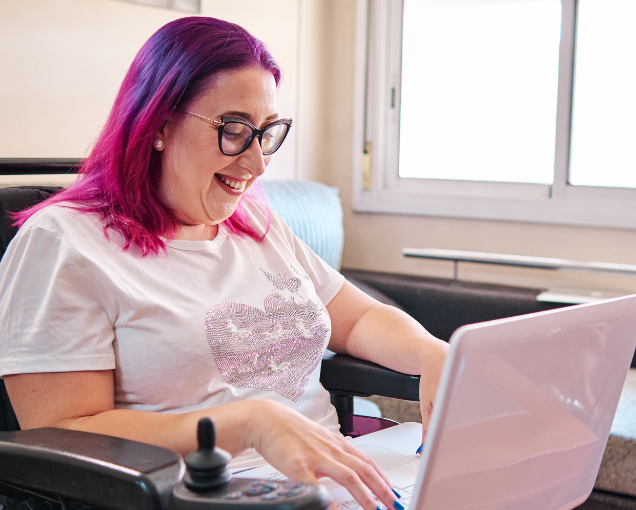Having spent the last few months working with our technical & design teams to create a suite of upgrades, including our website and Moodle Learning Management System, I have come to realise how rapidly the landscape of adult learning has changed in a few short years. One of the core goals of this latest upgrade is to increase awareness to ensure that everyone has equal access to quality education and professional development opportunities. Learner accessibility is at the heart of everything we do. In writing this blog, I hope to share with you some of the ideas that are guiding our practice towards removing barriers and ensuring every learner can participate fully, comfortably, and confidently in our training programmes.
What Accessibility Means to Us
In a world where online and virtual learning is becoming the norm, accessibility is no longer just about physical access to training rooms or printed material; it’s about making learning inclusive in every sense, including online and face-to-face. That includes:
- Digital accessibility – for online or blended learning, we provide content that meets accessibility standards, including screen reader compatibility, closed captions, and user-friendly navigation.
- Flexible materials – course content is adjusted as needed in a range of formats (print, digital, audio, large print) to suit different learning styles and needs.
- Visual Enhancements: we use thoughtfully designed visuals and well-structured video layouts to enhance accessibility, support diverse learning needs, and create a more comfortable and engaging learning experience.
- Expert Supportive trainers – our team is trained in inclusive teaching methods and is always open to adapting delivery based on individual requirements.
- Neurodiversity-friendly approaches: we provide structured sessions, visual aids, and a calm, respectful learning environment to support learners with ADHD, dyslexia, and other neurodiverse conditions. One-on-one private meetings with tutors help to alleviate any concerns that the learner is not happy about sharing in a public space.
- Physical accessibility – for onsite training, we ensure that our training venues are wheelchair-friendly and designed to accommodate learners with mobility needs.
How We Support You – the Human Touch
We encourage all learners to share their accessibility needs with us either before the course starts or during the programme. We find that the opportunity to speak directly to a ‘human’ can make a big difference to a learner with particular needs. In an age where AI is replacing humans in many services, we pride ourselves on being available and responsive when it comes to chatting directly with our learners. Other ways that we will work with you to make any necessary adjustments to your learning experience include:
- Extra time for assignments or assessments
- Quiet spaces or sensory breaks
- Adjusted learning aids/resources
- One-to-one support where required
Your privacy and dignity are important to us. All discussions around accessibility are kept confidential and will be handled sensitively.
A Continuous Journey
Accessibility is not a one-size-fits-all approach. Together with our learners, we continue to learn and grow, and your feedback helps us improve. If you’ve got suggestions on how we can make our courses more inclusive, we want to hear from you – email info@newlinkstraining.com .
Final Thoughts
Learning should be a positive and empowering experience for everyone. At New Links Training, we’re proud to continue building an environment where every learner feels welcome, respected, and supported.
If you’re considering enrolling on a course but have concerns about access or support, please reach out. Let’s work together to create the right learning experience for you.
Janet Tumulty
7.8.25


